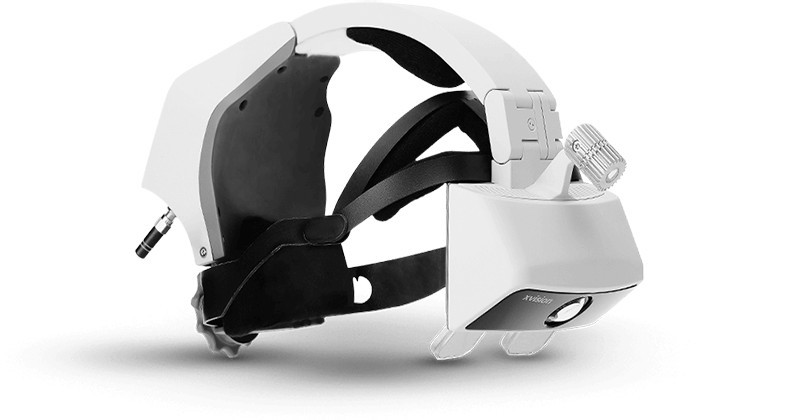
Naturally, much of orthopedics’ enabling and digital technologies have focused on the intraoperative environment. Orthopedic companies have developed robots, navigation systems and surgical planning software to drive efficiency in the O.R. and precision in the placement of their implants. We expect the next wave of technology will be patient engagement and monitoring technologies.
A host of engagement and monitoring tools are already on the market and aim to help orthopedic care teams and patients better manage postoperative recovery. Further, the technology embraces the desire for data capture and adds revenue streams for orthopedic companies and surgeons.
How are Companies Approaching Technology?
Orthopedic companies of all sizes are jumping into the digital technology space with apps, wearables and education programs. Some are implant companies branching into digital technologies. Others are companies explicitly focused on wearable devices and medtech apps. The ultimate goal of the technology is to better inform and empower patients and care teams after surgery. Additionally, the collection of outcomes data is expected to better inform the future of surgical recovery.
Colleen Gray is the CEO of TracPatch Health, a company with a wearable system designed to detect health ailments such as surgical site infections and stiff knees. Gray noted that apps and camera-based platforms make up the majority of patient engagement and monitoring tools. However, she believes that wearable patches working in tandem with apps deliver superior patient outcomes.
“There are many apps and camera-based systems available or on the horizon,” Gray said. “However, I believe patch-based solutions aided by apps (the basis of the TracPatch products) are the ideal formats, as they require little to no patient or surgeon intervention and, therefore, result in a higher level of patient compliance and satisfaction along with more consistent and objective data.”
The TracPatch KneeSystem is a platform of adhesive patches adhered directly to the patient’s skin. The patches deliver data to a healthcare provider web portal as well as both healthcare provider and patient-facing applications. The technology is engineered to monitor and report a patient’s range of motion, the temperature at the wound site, steps, exercise compliance and other clinically relevant data.
Like TracPatch, much of today’s wearables and apps focus on joint replacement. The large joint replacement players and companies like Exactech and Intellijoint have entered this space.
Zimmer Biomet recently announced the launch of WalkAI, an artificial intelligence model that integrates with the company’s mymobility digital care platform for knee replacement. WalkAI looks at a patient’s gait speed and predicts whether their speed may lag at 90-days post-op.
“WalkAI uses a proprietary algorithm that works in near real-time on a personalized patient by patient basis, automatically collecting the needed data and generating a daily prediction of their 90-day gait speed as the patient progresses through recovery,” said Liane Teplitsky, President, Global Robotics and Technology & Data Solutions at Zimmer Biomet. “A patient is then matched to a cohort of patients like them from our global ZBEdge database, and if their gait speed is predicted to be in the lower 15th percentile of that cohort, their surgeon and care team are notified.”
Through its AI algorithms, WalkAI identifies patients who may need attention and intervention and notifies their surgeon.
In March, we listened to more than a handful of orthopedic surgeons present on wearables, apps and digital education platforms at AAOS. There were a few trends we took away from those presentations.
First, surgeons find these technologies most helpful in identifying the outlier patients who might not be recovering as quickly or may have complications. Second, by utilizing these tools to better inform patients about what to expect and how to behave, their offices receive fewer calls from concerned patients. Third, these technologies have allowed surgeons to do fewer in-person follow-ups in some instances. Fourth, the technology has empowered patients’ family members to assist in their loved one’s recovery.
What’s Next for Digital Orthopedic Tools?
Arti Bedi Pullins is the founder of Pundit Consultantz, a healthcare innovation and creative services design consultancy. She has followed healthcare’s shift in technology adoption and helped companies market and implement new technologies.
Pullins pointed to Stryker and Zimmer Biomet as two orthopedic companies successfully leveraging fully-integrated wearables, apps and education curriculums throughout a patient’s surgery and recovery journey. The future, she said, will bring a greater emphasis on the merging of patient engagement technologies, sensor-based tools (wearables) and platforms that will deliver more personalized patient pathways.
“Tech startup Calcium Health is an example of a new platform that provides personalized communication pathways for a better experience and procedural outcomes,” Pullins said. “Another area that is potentially ripe for consolidation is sensors. These devices’ data and communication avenues are critical to helping care providers track patients’ progress and prevent post-surgery complications that require medical intervention. Consolidation between medtech manufacturers and patient engagement digital providers will define measurable results across the continuum of care, including providers, payors, manufacturers and technologists.”
When asked what lessons can be learned by companies that are launching these tools, Pullins stressed the importance of building solutions based on the perspective of the patient and understanding contact points to construct a patient-first approach.
“This is called using a scrum framework in the technology or engineering world, and medtech companies should adopt their hybrid strategy,” she said. “Create a centralized functioning team that provides patient focus, product development-based metrics, coordinated clinical resources and activities to avoid gaps. Enable the team to engage directly with patients and clinicians using self-service portals, webinars, telehealth/social media to support remote interactions with healthcare professionals and additional stakeholders like payors, hospital leaders and procurement professionals. Document results successes with providers, clinical teams, surgeons and patients to gain CMS, CPT, FDA, private insurance and regulatory compliances needed for scale.”
When asked what the future holds for patient engagement and monitoring tools, Teplitsky also pointed to technologies that will strengthen the relationship between patients and care providers.
“In orthopedics, we are actively building a future where smart and digital technologies are embedded within the entire episode of care to enable a deeper level of connection between patients and providers and offer rich and timely data-based clinical insights,” she said, noting that WalkAI is the first of multiple planned technologies to leverage AI. “We are really excited about this release, the technological capability it demonstrates, and what we can continue to build with that capability in the future.”
PM
Patrick McGuire is a BONEZONE Contributor.




